Informal businesses significantly contribute to employment and income generation in South Africa. As HSRC research shows, innovation is crucial to their survival. On 24 and 25 April 2024, the HSRC held a workshop with informal business owners at Philippi Village, Cape Town, to share a new evidence-based toolkit designed to support informal businesses in strengthening their innovation capabilities. This article sheds light on how informal business owners can use the toolkit to foster innovation for business sustainability and growth. By Il-haam Petersen, Lebogang Khoza and Setsoheng Mayeki.
Although informal businesses innovate continuously, innovation is used as part of reactive rather than proactive strategies. A research study published in 2021 shows how informal business owners may break from necessity-driven pathways by proactively using innovation for problem solving and taking up business opportunities. Proactive innovation can be a game-changer for survivalist and microenterprises.
At a recent workshop held in Philippi township, Cape Town, a team of HSRC researchers shared a set of guidelines and interactive learning tools designed to help informal business owners craft their own business innovation strategies. Business owners learned about innovation through a business innovation simulation and explored practical and proactive approaches to innovating in their businesses. They also connected with other informal business owners, learning with and from each other.
The workshop was attended by a diverse group of over 30 informal business owners from the township, including spaza shop owners and food vendors, furniture makers, car wash service providers, hair salon owners, and street vendors selling a variety of goods. To facilitate uptake and engagement, the workshop was conducted in English and the main language spoken in the township, IsiXhosa.
Using an informal business innovation toolkit
The workshop programme was based on a set of business innovation training modules co-created with the help of toolkit development specialist Bridget Steffen, who focuses on experiential learning techniques.
On day 1, participants learned about innovation through a set of playful scenarios. The concept and importance of a business innovation network was shared through a practical string-connection exercise. As each person introduced themselves and their businesses, they tossed a roll of string to another person, until everyone in the workshop was connected (Figure 1).
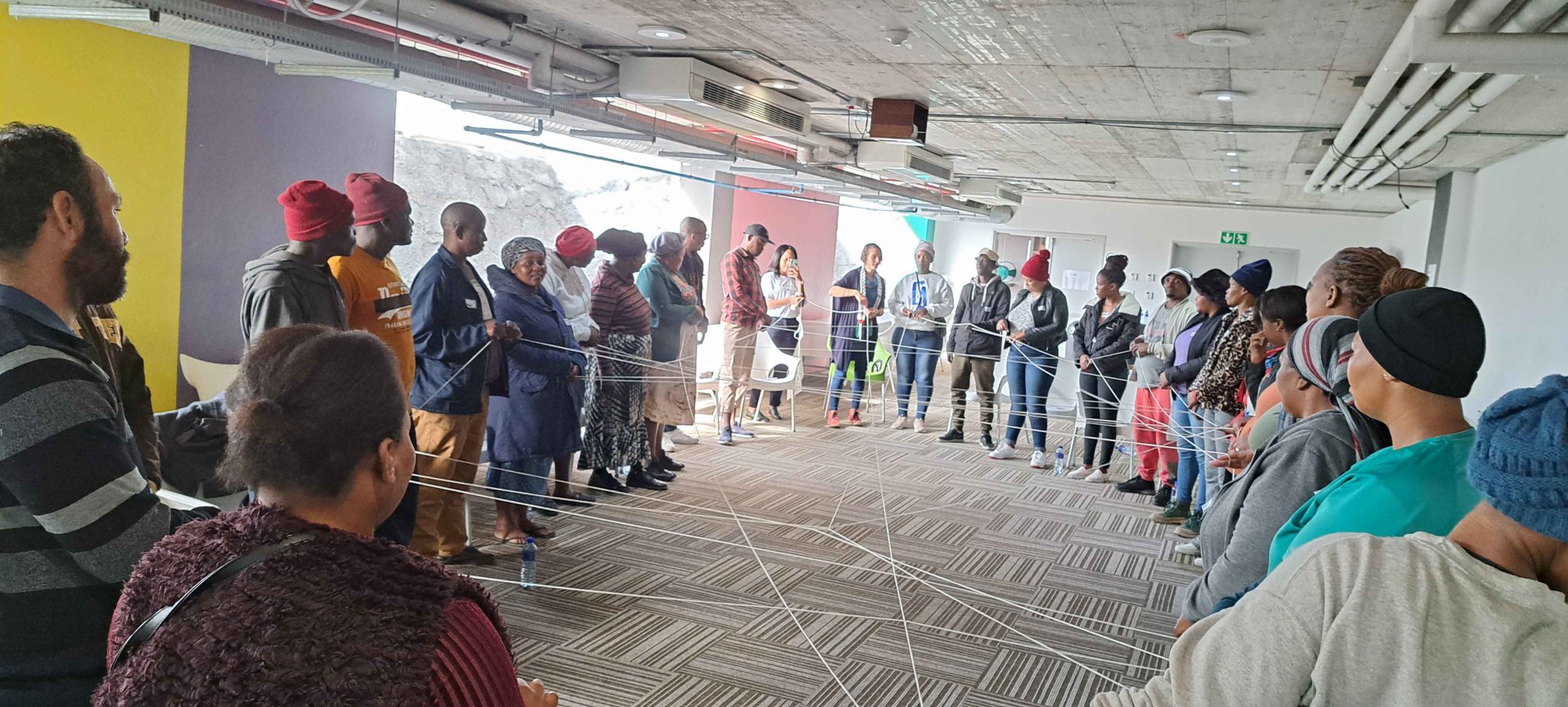
The next session facilitated information and knowledge sharing among the business owners, deepening the connections. Using colour pens, each created an A3 poster describing their businesses, business goals and biggest challenges (Figure 2). This was followed by a gallery walk (Figure 3).
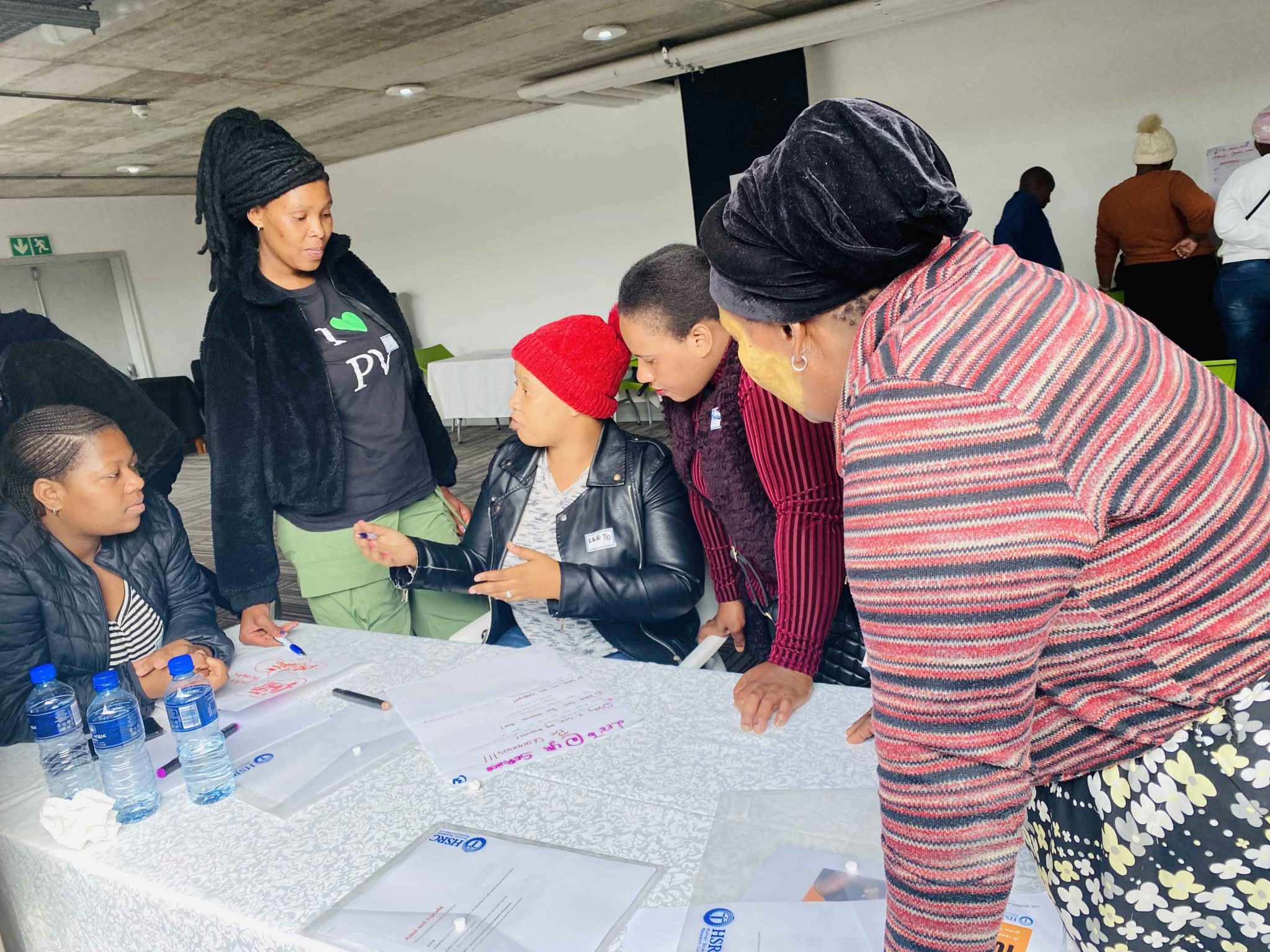
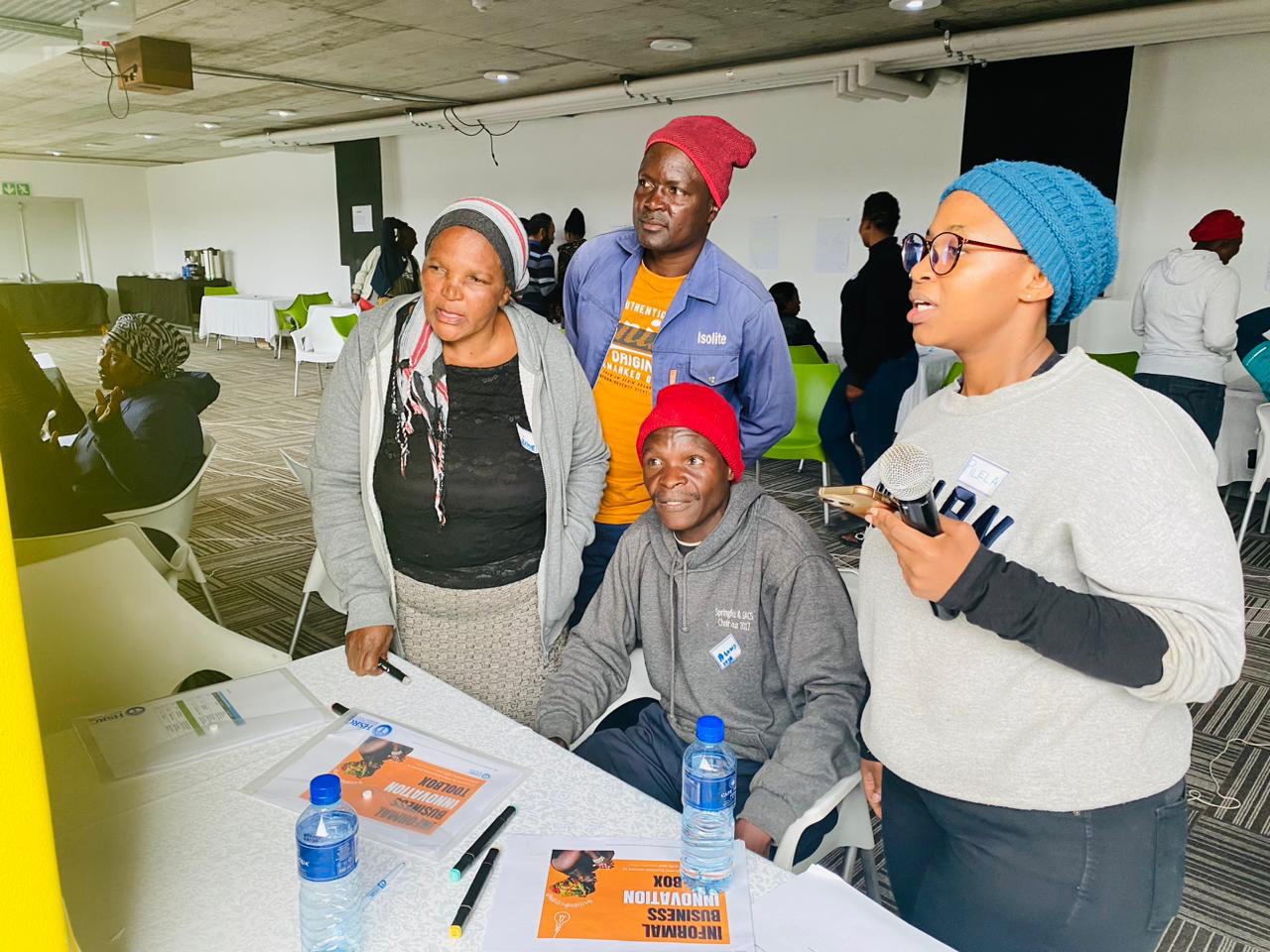
Based on the training modules, the HSRC’s Informal Business Innovation Toolkit encourages learning through scenario games. Based on an immersive learning approach, the games draw on real examples gathered through HSRC research. One is a card game facilitating engagement and discussion on crises and opportunities towards better problem-solving skills. The game started with the business owners selecting a card from a deck, setting out challenges as a crisis event or business opportunity (Figure 4). Responding to the scenarios on the cards prompted the participants to develop their awareness of how they respond to challenges. For some, it was an emotional experience, as the scenario was an example of a crisis they had experienced in their business.

Participants were guided to map their business innovation networks, a key part of a business innovation strategy, and use their networks to problem solve and take up business opportunities (Figure 5). Using the Five Whys technique, participants were guided to identify the root cause of a challenge before deciding on an action plan. They enjoyed the immersive learning approach; one business owner reported that the “activities made learning more exciting”.
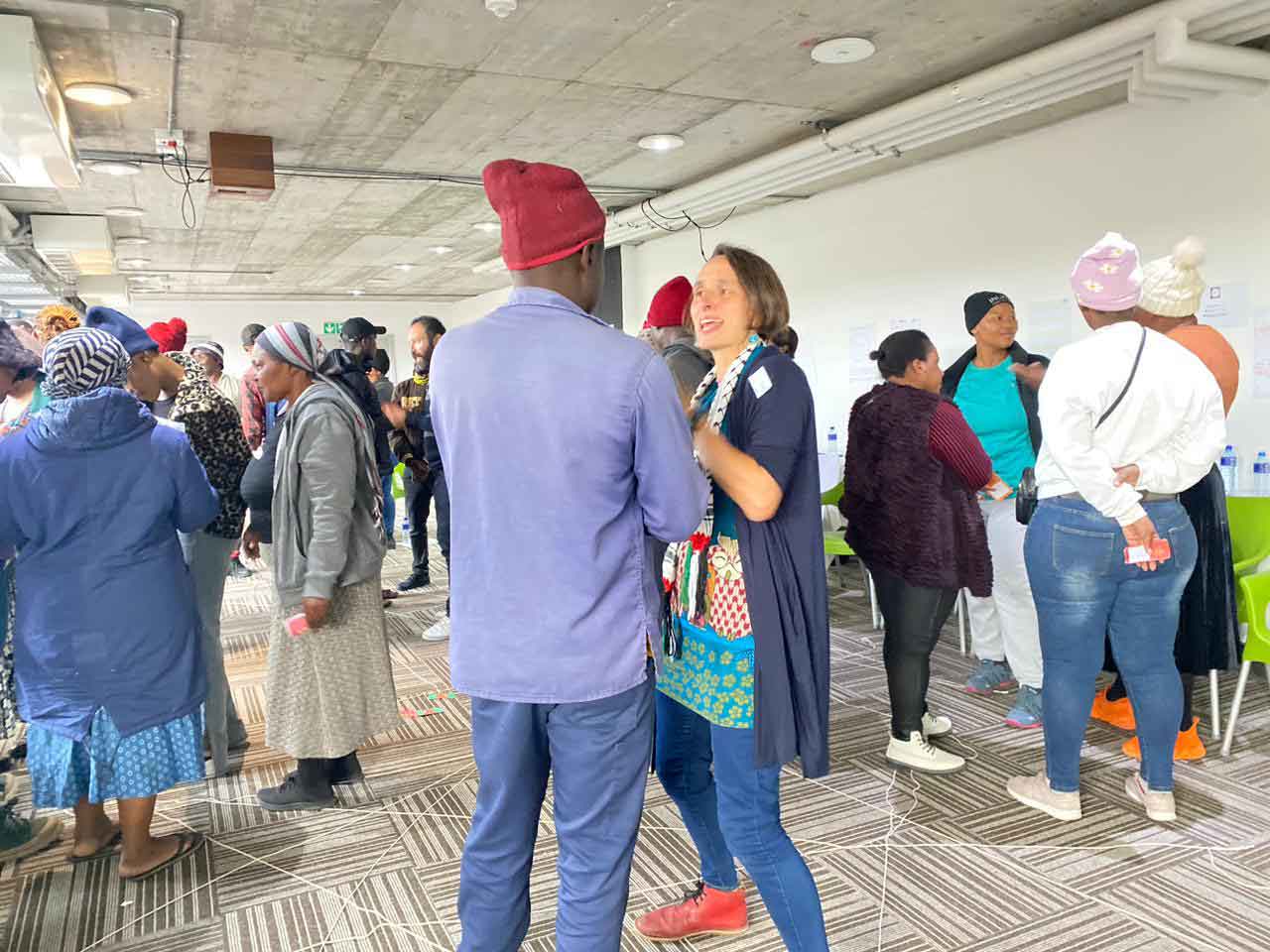
The focus of day 2 was to guide the business owners through a process of creating a business innovation strategy. It started with a time machine exercise, encouraging participants to take a guided journey that stretched their imaginations into the past and possible futures of their businesses. Mindfulness was encouraged by inviting participants to keep their feet on the ground and take deep breaths. This was followed by a discussion and challenge-mapping exercise (Figure 6).
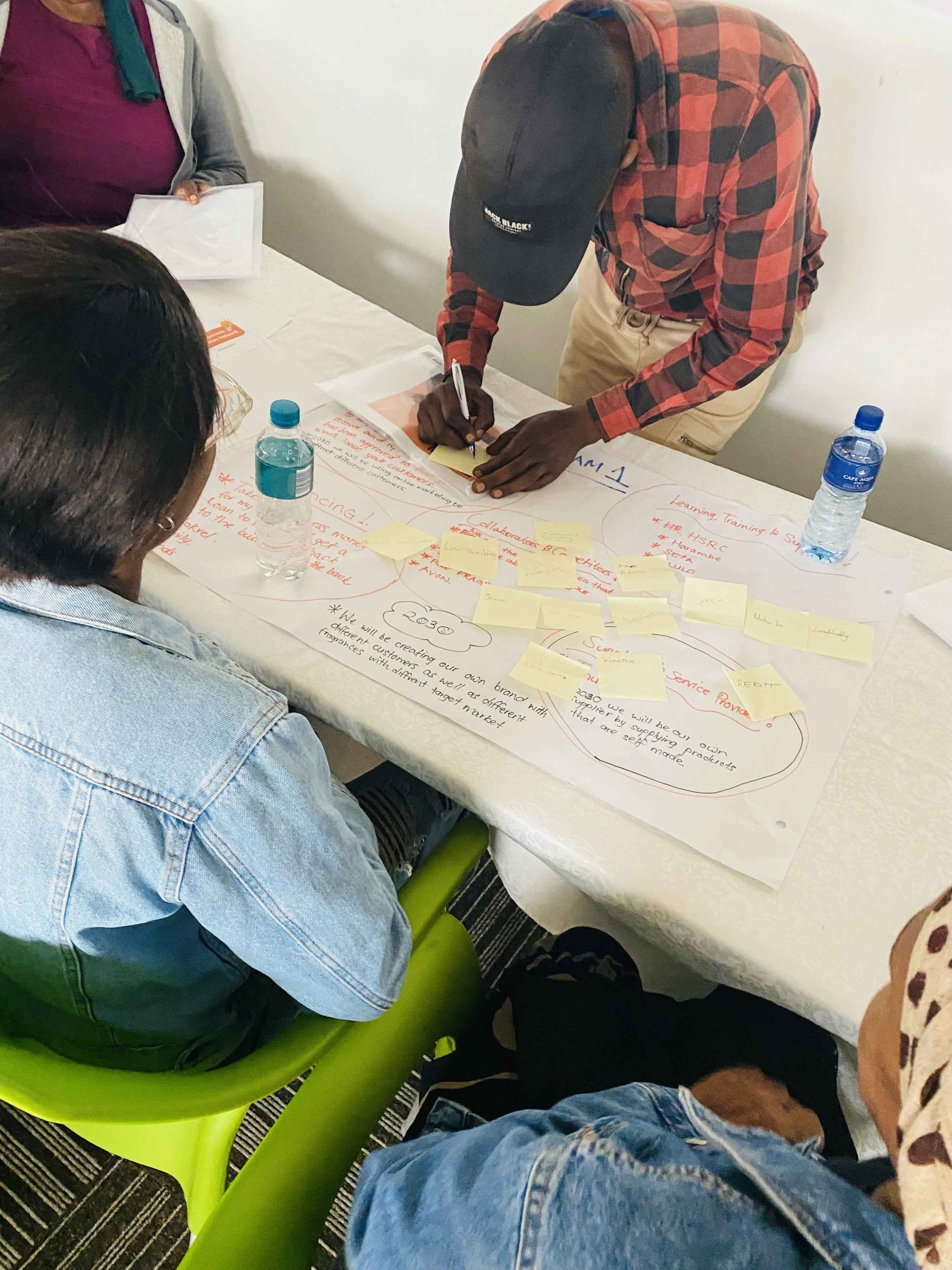
For most, increasing threats from extortion syndicates operating in the township were a major challenge. As one business owner explained:
“The issue of protection fees, often demanded by gangs, has become a significant concern for local businesses. These fees … are demanded under the threat of violence or vandalism if not paid … Business owners who refuse to comply often face dire consequences, including damage to their property, personal harm, or even the closure of their business.”
Four key ingredients of business innovation
The foundation of a business innovation strategy is the four key business innovation ingredients identified in the toolkit: knowledge, continuous learning, an innovation mindset and business culture, and good finance and risk management. Drawing on these four ingredients, participants were introduced to a set of colour-coded typical innovation strategies they could use to guide their customised business innovation strategies. Each strategy is associated with typical business goals:
- Survive (blue): I want to make just enough to keep my business running and cover expenses.
- Succeed (green): My business is doing fine. I want to grow profits.
- Prosper (advanced) (orange): My business is doing well and makes a profit. I now want to grow profits and expand my business to enter new markets.
- Prosper (world leader) (grey): My business is successful. I now want to become a world leader in the industry.
Working in groups, the participants created a fictitious business and developed an innovation strategy for that business.
In general, the business owners aspired to obtain funding but faced obstacles in meeting the funding application requirements, such as age restrictions and lack of business registration. The HSRC researchers emphasised that while the toolkit offers information on the benefits of formalisation, including accessing funding opportunities, formalisation itself should not be the ultimate goal. Instead, it is a step towards achieving long-term sustainability.
A take-home exercise was completing a business innovation strategy for their businesses. Each participant received a can of beans, a printout of the Strategy on a Tin Can template (Figure 7), and a pack of vegetable seeds. As Steffen explained, the seeds symbolise the “skills, ideas and connections” they gained in the workshop and can plant to continue growing their business innovation capabilities and opportunities.
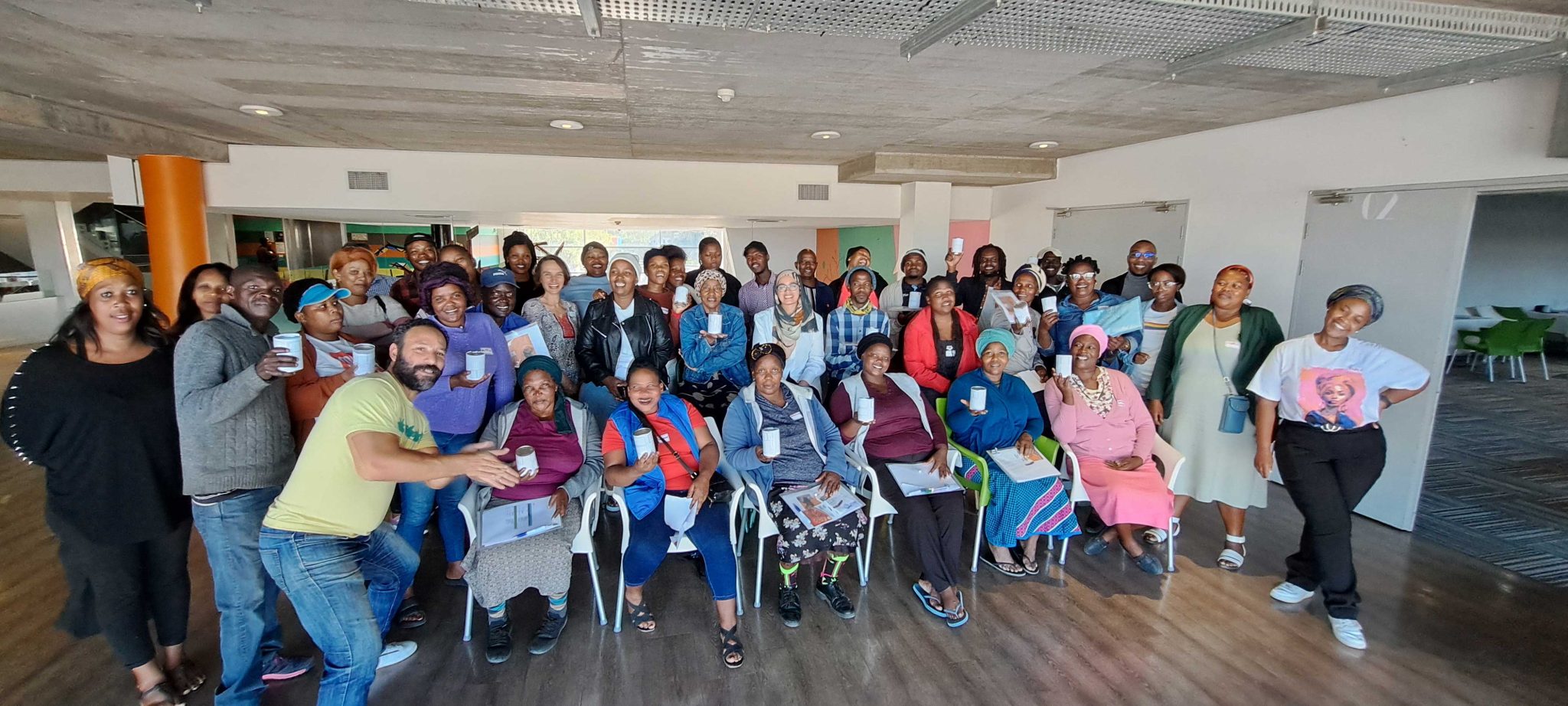
Fostering innovation mindsets
Coming into the workshop, the business owners did not realise that they were innovating in their businesses. A need exists for greater engagement and visibility of the HSRC in townships and informal settings. When asked about ways to improve the training and learning tools, most responded that they were happy with the training:
| Participants’ ‘take-home’ points |
“We can grow our business with the skills we have.”
“I connected with other small business owners and learnt how to improve my business.”
“New ideas on how to grow my business.”
“Putting my ideas to the test.”
“Improving my business and attracting more customers.”
“Now I can overcome a crisis and challenges in my business.”
“I learnt more about marketing and expanding the business.”
“I learnt from different people and activities.”
“I was not aware of innovation. Now I am aware.”
“I could not respond to crisis. Now I can.”
“The app will improve our business.”
Next steps to sharing the toolkit
The workshop was useful for testing the learning tools and training modules. The participants’ feedback was used to refine the toolkit and inform the final production phase of the My Business Innovation Planner (MyBIP) app, which includes the toolkit and additional interactive digital tools.
Participants’ recommendations for improving the app included simplifying the login procedures, translating the content into multiple languages, and enhancing the interactive features to minimise data usage. Using the MyBIP app is one way informal business owners can benefit directly from the research findings. The app will be launched later in 2024 and will be available as a free download from Google Play and the Apple App Store.
This article was originally published in the September 2024 issue of the HSRC Review.

Leave a Reply